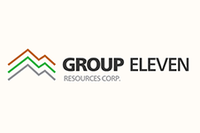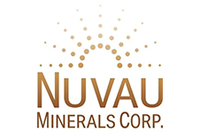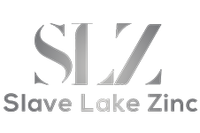By-product price signals may be telling miners to keep pumping out zinc — even at depressed prices and with oversupply looming.
Things are looking up for the lead market, according to a Reuters poll quoted by Arab News. But might that be a negative for its sister-metal, zinc?
Last summer, zinc looked to be surging relative to lead. London Metal Exchange prices for zinc rose to a slight, but notable, premium to lead prices — an unusual occurrence.
But over the last nine months, lead has stormed back. Currently, the metal trades at a significant 12-percent premium to zinc (nearly $0.99 per pound compared to just under $0.87 per pound for zinc).
In terms of percentage, the gap has been widening since February.
And according to Reuters writer Andy Home, the lead premium “should remain in place, given a more bullish set of underlying dynamics.”
Moreover, the zinc market was in surplus in 2012 to the tune of 265,000 metric tons (MT). Since 2007, the cumulative surplus has been 1.555 million MT. In contrast, the lead market faced a surplus of just 64,000 MT in 2012; its six-year cumulative surplus is only 253,000 MT.
In addition, Home notes that according to the International Lead and Zinc Study Group (ILZSG), the refined lead market likely moved into deficit in the second half of 2012.
That raises the question: what do stronger lead prices combined with soft zinc prices mean for the market?
The two metals are intricately linked given that they are produced together at many of the world’s major mines.
Normally, a softening zinc market would send price signals to producers, possibly leading to the scaling back or complete shuttering of some of these mines.
But the fear for zinc bulls is that regardless of the zinc price, strong lead prices could drive steady or even increased production from these co-product mines.
Such pricing behavior has been observed in the copper and molybdenum markets. As analyst John Kaiser explains it, “[t]he biggest downside threat to molybdenum prices lies with the giant Chilean copper deposits where adding a molybdenum recovery circuit is an afterthought easily made during the current copper boom … molybdenum gets produced regardless of the molybdenum price once the initial decision to add the capacity has been made. Copper by-product molybdenum production represents 50-60% of global molybdenum production.”
Found together
The question then becomes: how much of the world’s zinc is produced with significant lead credits?
A number of geological deposit types tend to contain the two metals together. For example, ores like volcanogenic massive sulfides in Australia and sedimentary-hosted deposits in the US.
Other types of deposits are known to contain lead and zinc separately. In Canada, for instance, large amounts of zinc — with little or no lead — have historically been produced as a by-product of nickel mining.
Although there are no exact statistics on how much of the world’s zinc comes with lead in tow, production statistics for lead and zinc from the US Geological Survey provide some idea.
Four nations are notable for producing large amounts of both lead and zinc: China, Australia, the US and Mexico (in order of total zinc output).
These four countries together produce 57 percent of the world’s zinc — just under 7.5 million MT of contained metal. They also put out 74 percent of the world’s lead — over 3.8 million MT of contained metal.
These numbers imply that over half of the world’s zinc supply is intimately bound up with lead.
ILZSG numbers on global mine grades for the two metals back this idea up.
Average mine grades for both metals have been falling more or less in tandem since 2000. During that period, zinc grades have fallen from approximately 7 percent to 5.5 percent — a decrease of one-fifth.
Lead grades have dropped from 2.7 percent to 2.1 percent. That’s a fall of almost exactly the same magnitude.
These statistics imply that globally, significant amounts of lead and zinc are being produced from the same mines — and these mines are experiencing similar declines in grade for the two metals.
The lead-zinc pipeline
Unsurprisingly, the buoyant lead market appears to be supporting the development of new lead-zinc projects globally.
In 2012, a total of seven new zinc mines were opened, according to the ILZSG. That represents an annual capacity of 573,000 MT contained zinc metal.
Of those new mines, five facilities — representing 74 percent of total output — are also significant lead producers.
The same pattern holds true for planned mine projects over the next two years. Twelve zinc mining projects are scheduled to open between now and 2014, for a total new annual capacity of 588,000 MT of contained zinc.
All but two of those — nearly 80 percent of this new capacity — come with lead production.
That suggests that over the next few years, zinc and lead prices will become even more intimately linked, with strong lead prices potentially spurring increased zinc production, even if zinc prices don’t pick up.
Changing production profile
Longer-term, however, zinc and lead seem to be due for a significant decoupling.
That’s because of all the zinc projects in the development pipeline — both near and longer term — fewer and fewer are coming with lead credits. A recent study by metals analyst CRU Group found that only about 20 percent of over 50 zinc projects being developed today contain lead as a by-product.
Moreover, the projects that do host lead-zinc ores are relatively small in terms of resource size as compared to non-lead projects.
The study notes that the largest zinc projects coming down the pipe will derive the majority of their income from zinc alone, making it more likely that the zinc market will stand on its own fundamentals.
Further, zinc may develop links with other metals markets — most notably precious metals.
CRU Group’s report identifies about 30 percent of zinc development projects as those where zinc is produced as by-product from precious metals such as silver.
Given currently high prices for precious metals, these projects represent the highest equivalent grades amongst all zinc development projects. Regular zinc projects come with grades between about 2 and 5 percent zinc equivalent, but grades for many of the precious metal-driven projects lie between 10 and 35 percent.
Those markets may become more crucial for zinc investors to watch in the future. But for the time being, lead is the one to keep an eye on.
Securities Disclosure: I, Dave Forest, do not hold equity interest in any companies mentioned in this article.
Related Reading:


